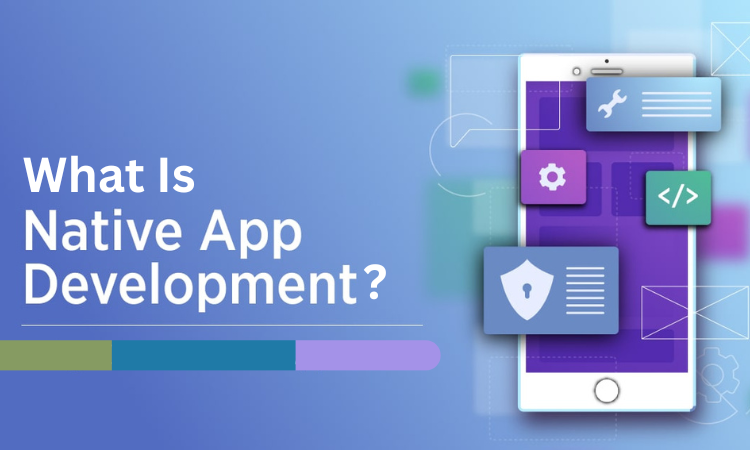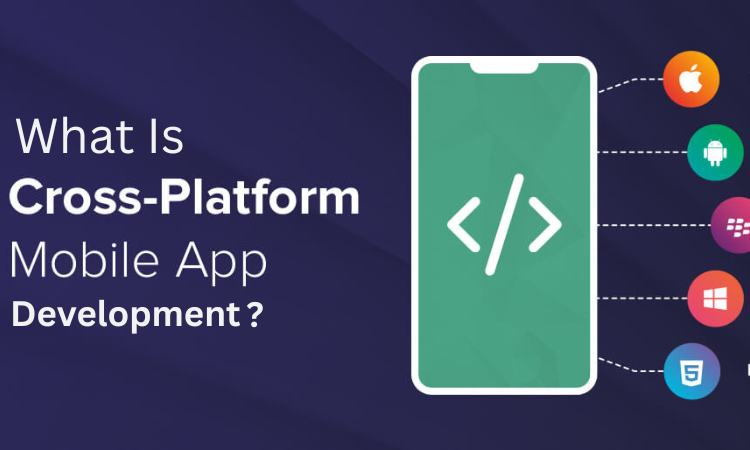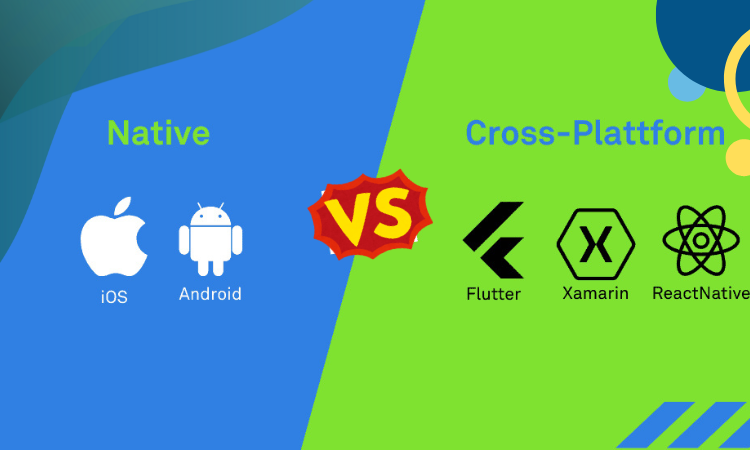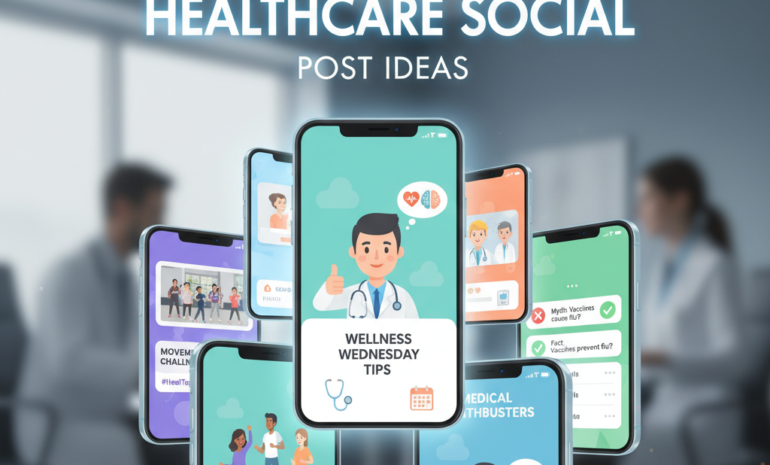Choosing between native and cross-platform app development can impact your budget, launch time, and overall app quality.
Native apps offer better performance and deep device integration, while cross-platform apps save time with a single codebase.
If you are unsure which one suits your project, this article explains both in simple terms, helping you understand the strengths and limitations of each approach before making a decision.
What Is Native App Development?
Native app development means creating an app specifically for the Android or iOS platforms.
Developers use platform-specific languages such as Swift or Objective-C for iOS, and Kotlin or Java for Android.
The biggest advantage is that native apps deliver excellent performance, fast loading times, and smooth animations.
These apps can access all device features like GPS, camera, microphone, and sensors without any limitations.
Native development is the go-to choice when you want an app that feels fully integrated with the device.
It is perfect for apps that require high-speed interactions or rely on hardware functions.
Though it takes more time and resources, native apps are more stable and better suited for complex tasks.
If user experience is your top priority, going native can help you deliver a product that feels polished and reliable.
You also get full access to the platform’s latest updates and features as they roll out.
Pros of Native App Development
- High performance and faster load times
- Full access to device features like GPS, camera, sensors
- Better security and data protection
- Smoother animations and UI interactions
- More reliable offline support
- Timely support for new OS updates and features
- Better user experience tailored to each platform
Cons of Native App Development
- Higher development cost due to separate apps
- Longer time to build and launch
- Requires two different codebases (iOS and Android)
- Maintenance is more complex and expensive
- Needs a larger development team or multiple specialists
- Testing must be done for each platform separately

What Is Cross-Platform App Development?
Cross-platform app development allows you to build a single codebase that works on multiple platforms, like Android and iOS.
Developers usually use tools like Flutter, React Native, or Xamarin. The biggest advantage here is saving time and money.
Instead of hiring two different teams, you can have one team build an app that runs everywhere.
These apps can be developed faster and updated more easily. However, they might not match the speed and smoothness of a native app, especially for high-performance tasks.
Cross-platform apps are great for startups, MVPs, and businesses that want to test the market quickly.
The technology has improved a lot, and for many types of apps, the difference is barely noticeable to users.
If you do not need advanced animations, heavy graphics, or platform-specific behavior, cross-platform development can give you everything you need while keeping costs lower.
Pros of Cross-Platform App Development
- One codebase for multiple platforms
- Faster development and quicker time to market
- Lower initial development cost
- Easier and cheaper to maintain
- Ideal for MVPs, internal tools, and startups
- A smaller team can handle both versions
- Updates can be pushed across platforms together
Cons of Cross-Platform App Development
- Slightly lower performance than native apps
- Limited access to advanced device features
- Not ideal for complex animations or heavy graphics
- May face compatibility issues with new OS updates
- Custom UI may not feel fully native on all devices
- Third-party plugin support can be limited or unstable

Key Differences Between Native and Cross-Platform
There are clear differences between native and cross platform development. Native apps usually offer better performance, smoother animations, and deeper access to device features.
Cross-platform apps, in contrast, focus on speed and cost-efficiency. When it comes to development time, cross-platform usually wins.
You write once and deploy everywhere. For maintenance, cross-platform apps are easier to manage as updates happen in one place.
Native apps need updates done separately for iOS and Android. Customization is another point.
Native allows full freedom for design and features, while cross-platform may face limits. In terms of user experience, native still has the upper hand; apps feel more fluid and behave naturally within the system.
Deciding between the two depends on what matters most to you: fast delivery and lower cost, or high performance and custom behavior. Both are powerful, but their strengths lie in different areas.
When Should You Choose Native Development?
Native development works best when your app needs speed, stability, and advanced features.
If you are building a game, an app that uses augmented reality, or one that connects deeply with the device hardware, then native is the right choice.
These apps handle complex animations and graphics better and give smoother performance.
If your user base is expecting a top-level experience without lag or delays, you will want native performance.
Another reason to go native is long-term growth. Native apps are easier to scale and customize deeply as your app evolves.
You get better support from the platform’s official tools, and you can make the most of updates and new features.
Although it requires more time and a bigger budget upfront, native development sets you up with a strong and stable foundation.
If your app is a major part of your business model, then investing in native is worth considering.

When Should You Choose Cross-Platform Development?
Cross-platform development makes sense when your project needs to move fast without spending too much.
It is ideal for startups, MVPs, and businesses that need to test an idea before committing to a full launch.
Since you are building one app for both iOS and Android, development is faster and costs less.
If your app is more functional than visually heavy, or if it is meant for internal use, then a cross-platform solution will likely meet your needs.
You can still offer a decent user experience without compromising too much on design.
Many companies use cross-platform development to release their first version and later shift to native once they understand user behavior.
It is a great way to save time in the beginning and stay flexible. For many businesses, getting to the market quickly matters more than having the perfect design from day one.
Cost Comparison: Native vs Cross-Platform App Development
When comparing both options, cross-platform development tends to cost less and is easier to maintain, while native development usually demands a higher budget.
The table below highlights how these two approaches differ in terms of cost, team structure, and long-term value.
| Feature | Native App Development | Cross-Platform App Development |
| Initial Development Cost | Higher (due to two separate apps) | Lower (single codebase for both platforms) |
| Team Requirement | Two teams (iOS and Android separately) | One team can handle both platforms |
| Development Timeline | Longer | Shorter |
| Testing Time & Cost | Doubled (two platforms) | Reduced (one set of tests) |
| Maintenance Cost | Higher (updates done separately) | Lower (updates applied once) |
| Best for Complex Features? | Yes | Not always suitable |
| Budget-Friendly for Startups? | Not ideal | Yes |
Which One is Faster in Development Time?
Writing a single codebase for both iOS and Android often reduces development time, which is why cross-platform apps are usually completed faster than native ones.
This saves weeks or even months compared to native development. With native apps, you need to build and test two separate versions, which takes more effort.
For startups or companies working under tight deadlines, time saved in development can be a huge advantage.
However, the extra time in native development often results in higher quality and better performance.
If your timeline is flexible and your app requires a lot of custom interactions or animations, native development might be worth the wait.
For projects where speed matters more than advanced features, cross-platform wins.
Choosing between the two depends on your goals: are you racing to release a beta, or building something that will grow over time?
That answer can help you decide the timeline that fits best.
What to Expect in App Maintenance and Updates?
Maintaining native apps means handling two separate codebases, one for iOS and another for Android.
This makes updates more time-consuming and increases the workload. Each fix or feature needs to be added in both versions.
On the other hand, cross-platform apps are easier to maintain because changes are made in one place and apply to both platforms.
This saves time and reduces the chances of bugs slipping through. Over the long term, maintenance costs are lower for cross-platform apps unless the app becomes too complex.
In that case, workarounds and plugin issues might add to the difficulty. Native apps, while more work to maintain, often face fewer compatibility issues and can fully support new OS features as soon as they are released.
Maintenance is not just about cost; it is about how often your app needs updates and how much support your users expect after launch.

BrandOut Can Help You Choose the Right Path
If you are unsure which path to take, BrandOut can guide you from planning to launch.
We offer complete mobile app development services, building both native and cross-platform apps that match your goals, budget, and timeline.
Our team helps you choose the right tools, keeps the process simple, and delivers apps that work in the real world.
You do not have to figure it all out alone. We focus on what matters most: your app’s performance, user experience, and long-term value.
If your idea is big or small, we help you build it smartly from the start.
Conclusion:
There is no single answer when it comes to native vs cross-platform app development. What works for one project might not suit another.
Native apps bring power, speed, and flexibility, while cross platform apps offer speed, simplicity, and savings.
It all comes down to what your app needs today, and what it might need tomorrow. Think about your goals, timeline, budget, and how users will interact with your app.
Once you know what you are building and why, choosing the right development path becomes much easier.
Most Asked Questions:
Is WhatsApp native or cross-platform?
WhatsApp is a native app. It has been developed separately for both Android and iOS to provide smooth performance and strong security features.
Its use of native technologies ensures reliable access to device-specific functions such as calling, messaging, and media sharing.
This native approach helps WhatsApp deliver a fast and consistent user experience on every device.
Is cross-platform development worth it?
Yes, cross-platform development is worth considering, especially for startups or businesses that want to launch faster and reduce development costs.
It works best for simple apps or MVPs that do not need complex features. Using one codebase saves time, and updates are easier.
However, apps needing high performance or deep customization may need native development.
Is Instagram native or cross-platform?
Instagram was originally developed as a native app, and it still relies on native technologies today.
This allows the app to offer high performance, smooth transitions, and strong compatibility with camera and media features.
Instagram’s native structure helps maintain consistency and responsiveness across both Android and iOS platforms, especially for its real-time content and interactions.
Is Flutter or React Native better?
Both Flutter and React Native are solid choices for cross-platform development. Flutter offers better UI control and smoother animations, making it great for design-heavy apps.
React Native, backed by Meta, is easier to adopt for developers familiar with JavaScript. The best choice depends on your team’s skill set and the specific features your app needs.
Which apps are native?
Many leading apps are built using native development. Examples include WhatsApp, Instagram, Spotify, and LinkedIn.
These apps benefit from better speed, stability, and device-specific features. Native development helps them deliver high-quality experiences tailored to each platform.
Although cross-platform tools have improved, large-scale apps often still choose native to meet performance and customization goals.





